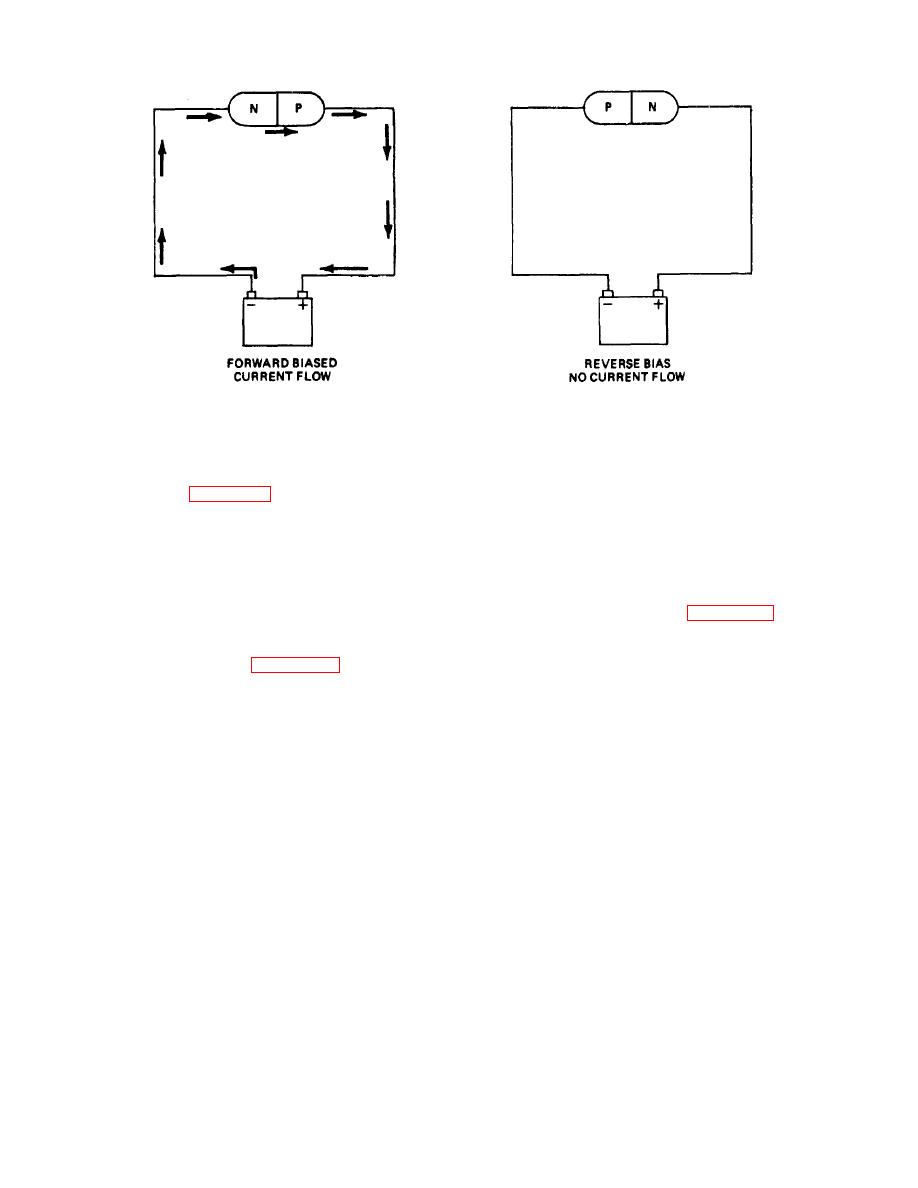
TM 9-8000
Figure 11-8. Diode Operation.
component. This element is called the collector. The
11-8. Transistors.
third element, which is in the middle, is made of N-type
material and is called the base. The application of a low-
a. General (Fig. 11-10). Transistors, as they
current negative charge to the base will allow a heavy
apply to automotive applications, are switching devices.
current to flow between the emitter and the collector.
They can switch large amounts of electric current on and
Whenever the current to the base is switched off, the
off using relatively small amounts of electric current.
current flow from the emitter to the collector is
Because transistors operate electronically, they last
interrupted also.
much longer than the relays they replace. This is
because they have no contact points to burn. The major
c.
NPN Transistors (Fig. 11-11).
The NPN
automotive applications of transistors are for electronic
transistor is similar to the PNP transistor. The difference
ignition systems and voltage regulators.
is that it is used in the negative side of the circuit. As the
name NPN implies, the makeup of this transistor is two
b. PNP Transistors (Fig. 11-11). The PNP
elements of N-type material (collector and emitter) with
transistor is the most common configuration in
an element of P-type material (base) sandwiched in
automotive applications.
It is manufactured by
between. The NPN transistor will allow a high-current
sandwiching an N-type semiconductor element between
negative charge to flow from the collector to the emitter-
two P-type semiconductor elements. A positive charge
whenever a relatively low current positive charge is
is applied to one of the P-type elements. This element is
applied to the base.
called the emitter. The other P-type element connects to
the electrical
TA233525
11-7




 Previous Page
Previous Page
